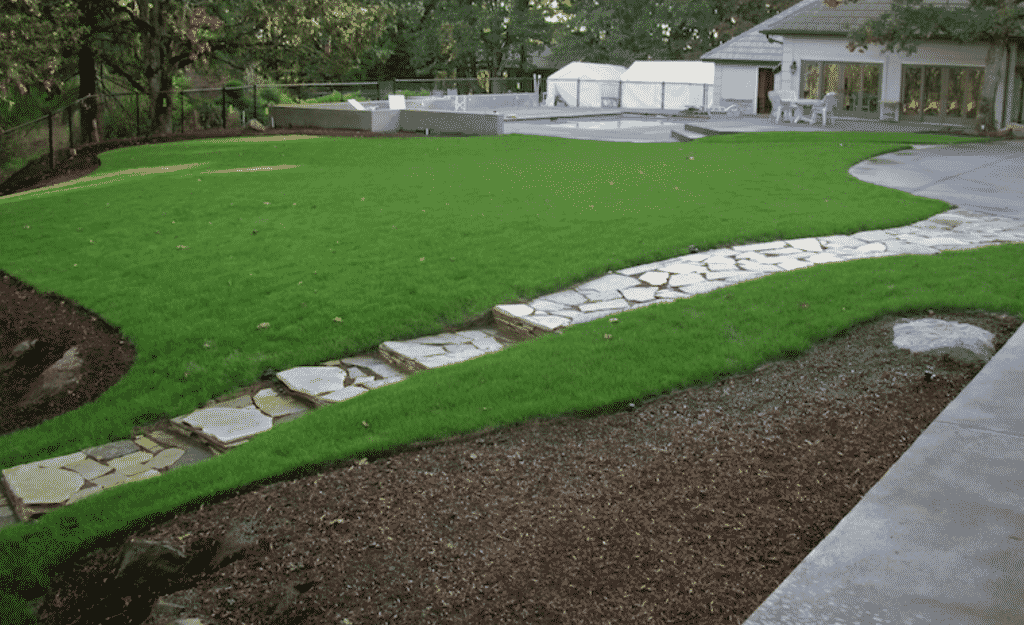The Reason We Need to Aerate Our Lawn
Roots grow stronger and deeper only get enough air, moisture and nutrition. When soil get hardened, this will inhibit the flow of requisite materials which are beneficial to thicker and healthier grass’ health. A layer of compacted soil that is only 0.75″ to 0.5″ thick can significantly improve the health and beauty of your lawn. Aeration is to punch holes in the soil to abate the compacted influence, and let air, water and nutrition reach into grass’ roots.
Compacted soil deprive grass’s elemental needs, lawn grass will loss health and colors under the struggle of high temperature and low rainfall. Grass gradually become flimsy and finally wilt, because it lacks oxygen, moisture and nutrients only a few inches away. Even though, single aeration can open the path for these necessities, help them reach their goals, and return your lawn to an upward trend.
When Your Lawn Need to Aerate
Your lawn is very easy to be compacted. When yourself, your children and pets walk through the lawn, those force will push pressure into grass which could be squashed and compacted. If your lawn soil is clay, you may need aerate it every year to prevent it become more flimsy. You should juggle weeding and aerating, although they are the two different tasks.
Thatch is on the surface of the lawn, there is a layer of stocking biodegradable organic materials. When the thickness of thatch is more than 0.5 inches, it acts like compaction to prevent the flow of air, water and nutrients that the grass needs. Aerating is beneficial to infiltrate and reduce thatch accumulation, or remove it by removing thatch.
If your grass are compact, the soil is very hard to absorb water, like rain, needless to say to absorb nutrition. How to test your compaction of your lawn? Use a common screwdriver, insert it into soil, if it slips easily into soil, then the soil is loose; if it meets obstruction, your soil is compacted, it tells you that you need to aerate it.
Same with other projects, we should obey their natural timing. It is best to ventilate during or before the grass reaches its natural peak growth period. Ventilation is good for the lawn, but if the time is not appropriate, it will put pressure on the grass. Never inflate a dormant lawn.
If you are in cold north, the best time to aerator the lawn in early autumn or early spring. If you live in warm south, it is supposed to aerate it late spring or early summer. When the lawn is in growing status, and it also happens aeration, the grass will quickly recover and fill the exposed soil area caused by lawn aerator.
Before you aerate lawn, it is supposed to soak the lawn two days ago. Moisture can alleviate this process and help it easily. However, too dry soil is difficult to ventilate. And the most important, you also cannot aerate it when your lawn is too moist.
Aerator Devices Help Ventilate
Plug aerator. This device will punch holes in lawn and those soils come out from those holes will stay on the top. They will decompose gradually. It is suggested that do not use this device if the soil is very wet as it will cause clogged in the core.
Spike aerator
There are two long spikes on the bottom of this device. Gardzen spike aerator uses four pointed tines to punch holes in the lawn with no soil removed from the ground.
Spike Shoes
The theory is same with spike aerators. Gardzen spike shoes leave holes in the ground to make the soil loose. Watering will cause the compacted soil around the holes to expand and close.
Angela Spearman is a journalist at EzineMark who enjoys writing about the latest trending technology and business news.

